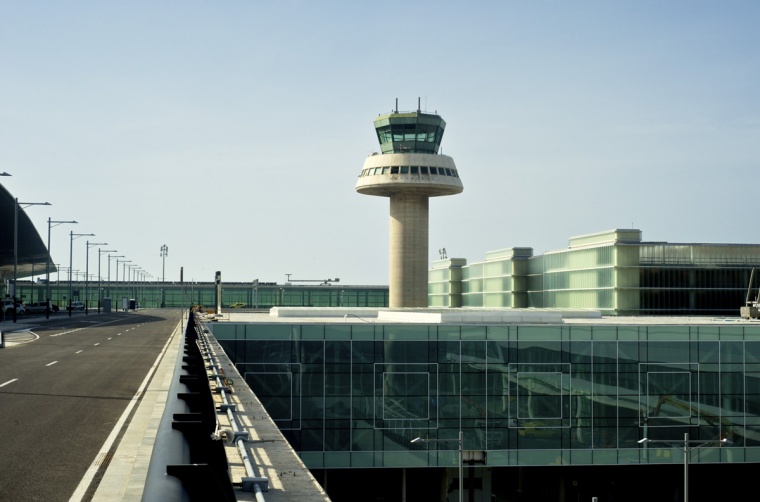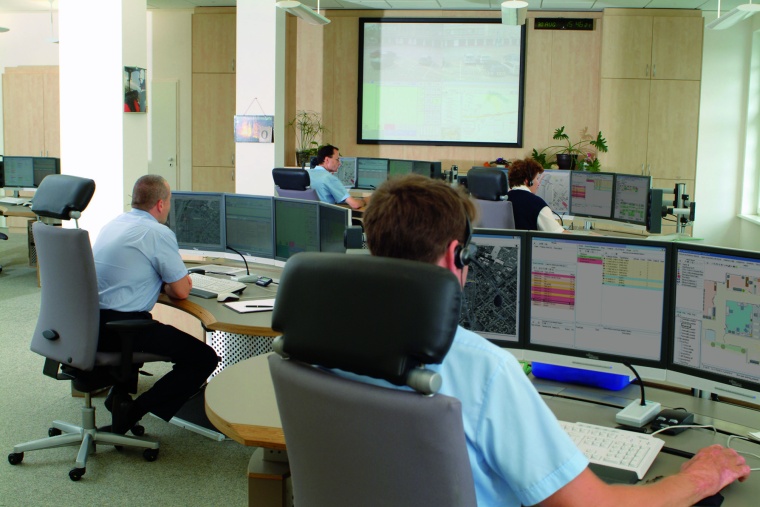Trends in airport security: Meeting the challenges
The challenges facing today's airport security decision makers become ever more complex, as additional processes traditionally outside of their scope of responsibility have to be c...



The challenges facing today's airport security decision makers become ever more complex, as additional processes traditionally outside of their scope of responsibility have to be considered. These include passenger flow management, higher capacity aircraft, differing passenger security classification criteria, legislative compliance and the increasing pressure of operational uptime and profitability. The security industry is responding to all of these challenges, and as it does, there are several discernible trends coming to light.
Trend 1: Use of intelligent, wide-area surveillance
The implementation of any comprehensive security policy usually involves a multi-layered approach with the first line of defense being the surrounding airport perimeter. There have recently been a number of highly publicized incidents at airports, which were initiated as a result of a perimeter security breach - both inadvertently and deliberately. Such incidents not only pose an immediate threat to operations as well as passenger and airport asset security and safety, but can damage an airport's reputation in today's competitive market and undermine trust and confidence of business partners and customers.
The current sophisticated solutions for effective perimeter security detection include, amongst others, long-range, thermal-imaging surveillance cameras, false alarm resilient presence and motion-detection sensors, as well as ground-radar detection and tracking. Once deployed, these external detection systems can be operated through intelligent management platforms to automatically qualify and identify unauthorized attempted access well beyond the airport boundary and contain a potential risk before it poses a threat to operations and assets.
The benefits associated with the live tracking of qualified objects, vehicles and people via video analytics have also assisted airport operators to effectively manage all ground activity in a typically busy and dynamic environment. All movement and activity is automatically mapped against planned and authorized routes with real time integration of other airport databases. This facilitates airport security operators to be alerted and react to extraordinary events and suspicious behavior aided by pre-defined and approved workflows. Today's large-scale surveillance solutions filter critical events from camera and other sensor input, graphically displaying results via a comprehensive digital map on a single screen. Integrated three-dimensional analytics determine particular object attributes, supporting operators in pre-qualified classification of all activity and incidents. Using intelligent policy zones and virtual barriers, these systems detect, track, and classify activity, enabling operators to see what is happening throughout the whole area in real time.
Trend 2: Protection of the apron
The airport apron, where aircraft are parked, loaded, unloaded and refueled, is an extremely high-risk and sensitive area. To counter the threat of unauthorized access, state-of-the-art video systems with intelligent algorithms are being implemented to track objects and persons, and to interpret and define routine aircraft servicing operations while parked within the apron area. These solutions facilitate the immediate detection of extraordinary activities and maintain a constant state of vigilance, ensuring the security of aircraft and associated assets.
Current solutions available to airport operators make use of surveillance cameras to create virtual barriers or zones, around fences, buildings or areas within the apron, that trigger automatic alerts when unauthorized activity occurs. Images from cameras covering the area are automatically displayed to the operator, tracking and classifying activity in real time. Operators simply view one graphical display of the entire apron area showing all the necessary information. When an incident occurs, the exact location is pinpointed and the fast and efficient deployment of security personnel or suitable resources facilitated.
Trend 3: Optimization of existing terminal infrastructure
The need for controlled and efficient transfer of passengers travelling to or arriving from destinations with differing security credentials within a common terminal area is a challenge facing many of today's airports. In Europe, for example, there is need for the measured, controlled and secure segregation of passengers travelling from Schengen* and Non-Schengen countries. Globally, many international airports face similar passenger segregation requirements when looking to process domestic and international passengers in their ever busier terminals.
In these situations, immigration and customs procedures are performed in segregated areas under particular conditions, but often use the same terminal infrastructure. Solutions are needed to eliminate the possibility of passengers or objects being transferred from one controlled zone to another. Unique measures are now being installed in many airports to facilitate the automated transit between only predefined and pre-approved areas. A major European airport, for example, is currently installing a solution to allow passengers to access existing common use elevators to travel between terminal levels with differing active security policies. When an elevator is called, the absence of passengers or objects is assured through detailed scanning of the elevator cabin by multiple surveillance and thermal imaging cameras, together with 3D motion detectors. The process is completed within seconds, ensuring the elevator is empty before setting off and no breach of security through the transfer of persons or objects is possible.
Trend 4: Measuring of passenger flow
Despite recent economic setbacks, air travel continues to grow globally. Code-sharing between carriers, the use of larger aircraft and the 'hub and spoke' system offer tremendous efficiency gains to airlines, but have also resulted in increased passenger numbers being within the terminal at any one time.
The resulting formation of bottlenecks and queues is a key issue facing today's airports. Stringent security procedures compound the problem, necessitating passengers to arrive hours before boarding and restricting their movement within the terminal. Adequate numbers of staff must be in position to manage all corresponding processes and the expected facilities must also be available. Balancing this provision of optimum service against cost and the consequences of unexpected delays is a truly complex task.
The ability to measure and manage queues at all key points within the passenger flow path is a key element in optimizing airport operations. Intelligent solutions are now available to assist staff in tracking, managing and sharing information about passengers and their luggage. Technologies such as flow-monitoring and predictive analytics can enable airports to capture and access data in real-time, supporting them in making the most effective decisions. Examples of technology supporting airport queue and passenger flow optimization, whilst reducing operational costs, include the automated validation of boarding passes and automated staff scheduling and dynamic deployment of resources in response to real-time passenger activity. Utilizing accurate passenger flow data offers airports the opportunity to enhance operational efficiency, optimize terminal layouts, and to reconfigure retail areas and increase revenues as a result of a better understanding of passenger behavior. Real-time data of expected and actual waiting times is increasingly being provided to passengers and has been proven to reduce the potential for passenger frustration and dissatisfaction, in turn improving the airport's reputation and securing repeat business. Monitoring capabilities can be used to track assets such as wheelchairs and vehicles for passengers with reduced mobility, ensuring their availability when needed.
Trend 5: Biometric identification and verification
For a number of years, researchers have been developing highly secure authentication techniques that use the recognition of measurable biological characteristics for enhanced security and improved convenience.
There is an increasing demand from the airport sector for the more wide-spread use of biometric verification technology to compliment and increase the security of traditional access control and identification solutions. Unauthorized access tops the list of airport security threats according to a recent survey of airport security managers. The potential mis-use of staff and contractor ID badges to gain access to unauthorized areas within an airport requires a highly effective yet user-efficient means of providing additional security levels. As biometric solutions become ever more cost effective and reliable, their use is expected to increase. Several technologies such as fingerprint, face, iris and retina scanners for identity validation have been used for a number of years, with differing levels of success. Palm vein detection is among the latest technologies being introduced into the market, utilizing one of the most effective and widely accepted identification techniques, through the contactless and safe scanning of human vein patterns within the palm of the hand. The unique palm vein patterns of each human individual are extremely complex, and the position of the veins remains unchanged for life, ensuring identification is extremely reliable with even skin defects or superficial injuries not affecting the performance of the reader.
Verification readers use infrared technology to scan the blood vein patterns within seconds and typically validate the pre-stored characteristics of the registered user's card, ensuring the card is only used by the true owner.
Meeting the challenge with the right partner
These trends ably demonstrate that the security industry is responding to today's challenges and addressing the needs of airport operators. Within an airport however, certain security solutions can compromise the efficient flow of passenger and air traffic. It is therefore important that problems or threats are identified early and dealt with reliably, with systems working together to ensure an optimum level of reaction and response. Integrated solutions enhance security, increase efficiency and reliability while reducing airport operators' exposure to risk and improving the overall passenger experience. Command and control platforms from leading manufacturers are a critical part of the day-to-day running of an airport and provide a coordinated, timely and appropriate response to all security and safety incidents.
Only a limited number of security solution providers can offer a bespoke airport portfolio, the necessary knowledge, global reach and project experience required to meet the demands of today's airports. Fewer yet are fully able to deliver integrated airport projects, supporting clients through technical design and specification, project management, training and long term service and support.
Modern airport security is a complex and dynamic subject, but, with the support of the right security solution provider, a most effective solution is more accessible than ever.
(*The Schengen Area is a group of 26 European countries which have abolished passport and immigration controls at their common borders, utilizing a common Visa policy.)
Business Partner
Siemens Smart InfrastructureTheilerstrasse 1a
6300 Zug
Switzerland
most read

Five Questions with Intersec Saudi Arabia Exhibition Director Riham Sedik
Intersec Saudi Arabia 2025: Exclusive Insights with Riham Sedik, Exhibition Director

Is Your Venue Ready for Martyn’s Law?
Martyn’s Law demands stronger security by 2027. Is your venue prepared to protect and respond?


Machine & plant safety: The winners of category A at the GIT SECURITY AWARD 2026
GIT SECURITY AWARD 2026: Machine & plant safety - an overview of the most innovative solutions









